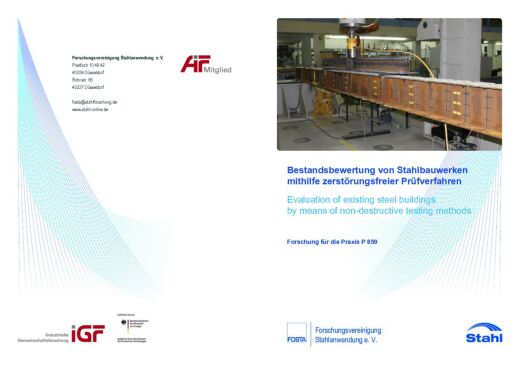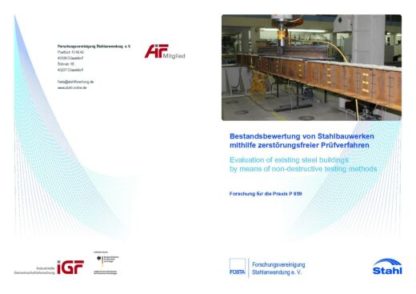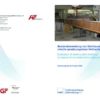Description
P 859 – Evaluation of existing steel structures by using non-destructive test procedures
Aim of the research project was the determination of the current state of stress of loaded beams by ultrasonic measurements as well as to determine the unknown yield strength of steel grades by micro magnetic measurements.
The strengthening of existing buildings in the future is a big challenge for engineers and construction firms. If it is possible to proof a sufficient verification of resistance for future use, resources will be saved and people and the environment will be protected. The determination of the resistance and the current loading conditions have substantial influence on the technical solutions and the economy of use for future.
The magnetic characteristics of a great number of different steel types from different production periods, different qualities and different material characteristics were measured by a micro magnetic measurement system to assign them to the yield strength that was measured in a classical tensile test. Furthermore, it is possible to determine the yield strength of a build in steel girder with the measured micro magnetic parameters using a given calibration function.
In laboratory tests, the difference of ultrasonic time-of-flight of different steel types was measured in case of the different loads of the beams. With the knownstresses it is possible to determine a calibration factor that assigns the difference of the time-of-flight to the current stress level. An algorithm was developed to determine the shear stresses in the web that takes the influence of steels texture on the time-of-flight measuring into account. This allows the determination of longi-tudinal stresses as well as shear stresses in the web. The observed data shows some spreading and can contain mistakes. Furthermore, an algorithm was developed which eliminates false measured values. Moreover, for smoothing of determined stress curves, non-parametric time series analysis was used.
Finally, it was shown that it is possible to determine the remaining load carrying capacity of existing steel buildings by means of non-destructive determination of the current stress level and the yield strength. Necessary strengthening can be performed economical and resources are saved.
The research project (IGF-Nr. 16586 N) was carried out at Fachbereich Bauingenieurwesen, Fachgebiet Stahlbau und vom Fachbereich Mathematik, Lehrgebiet Statistik der TU Kaiserslautern sowie vom Fraunhofer-Institut für Zerstörungsfreie Prüfverfahren IZFP, Saarbrücken. FOSTA has accompanied the research project work and has organized the project funding from the Federal Ministry of Economics and Technology through the AiF as part of the programme for promoting industrial cooperation research (IGF) in accordance with a resolution of the German parliament.
Only available in german language.
Authors:
W. Kurz, C. Fox, M. Doktor, R. Hanke, M. Kopp, T. Schwender
Published in:
2016




